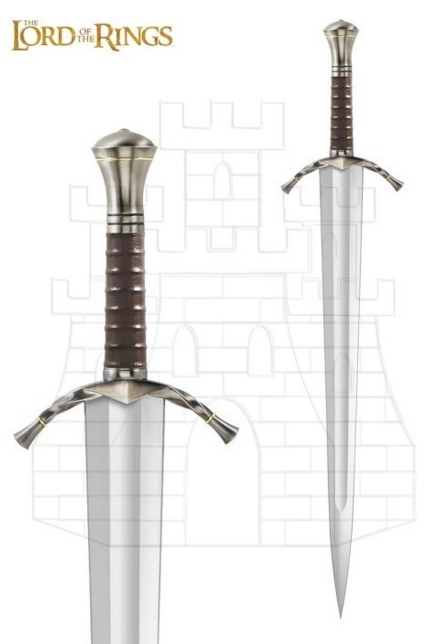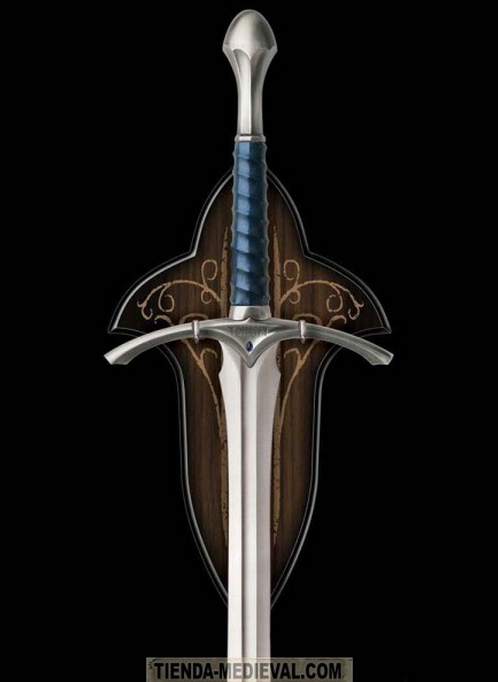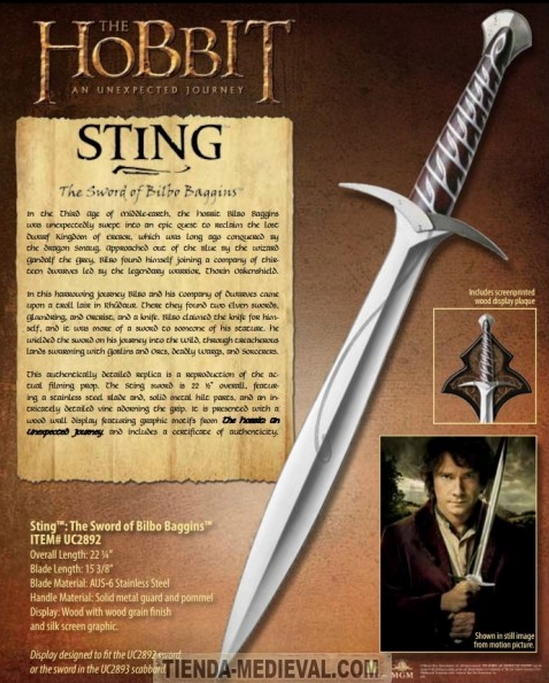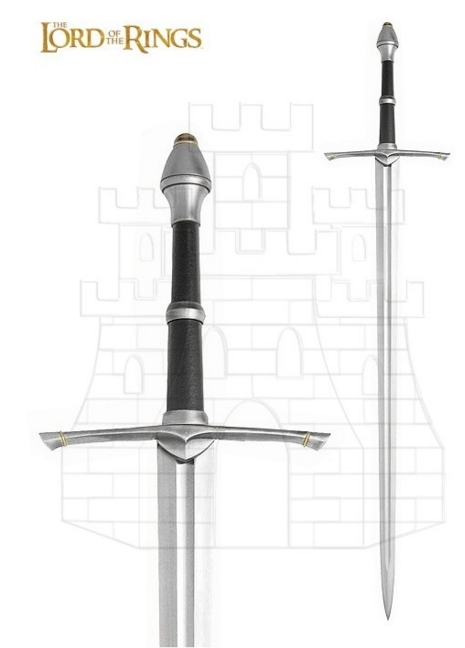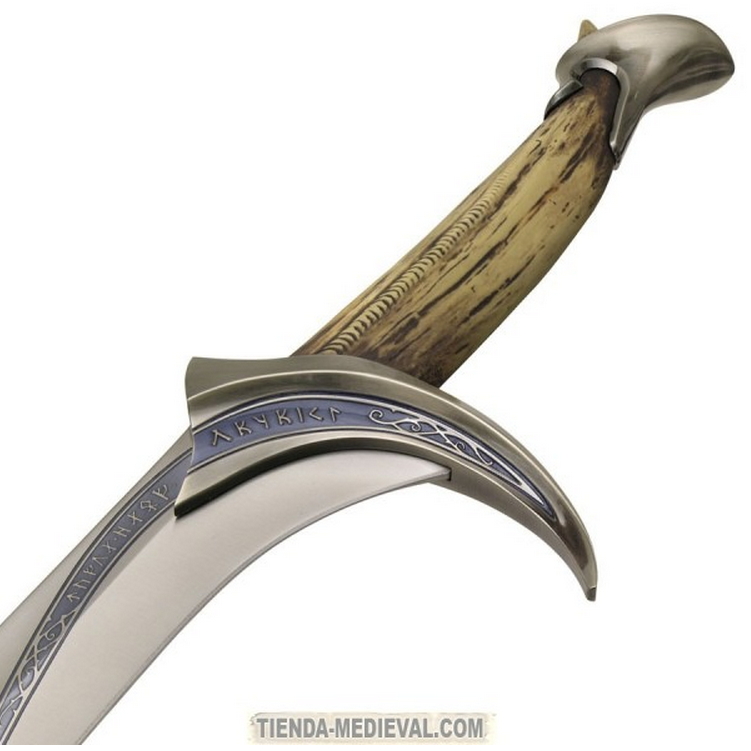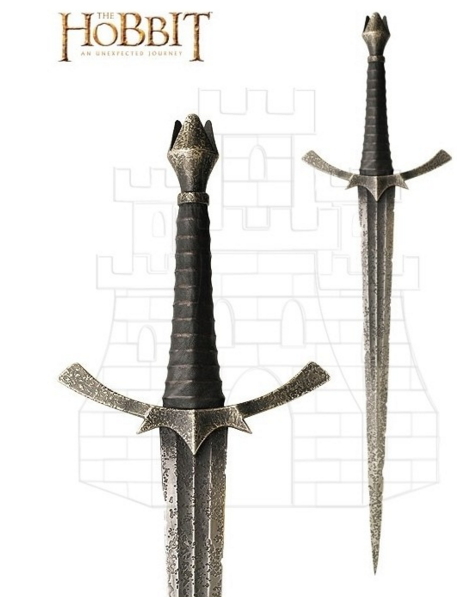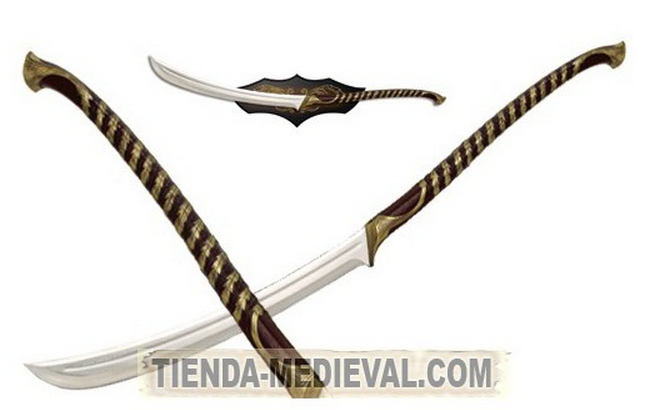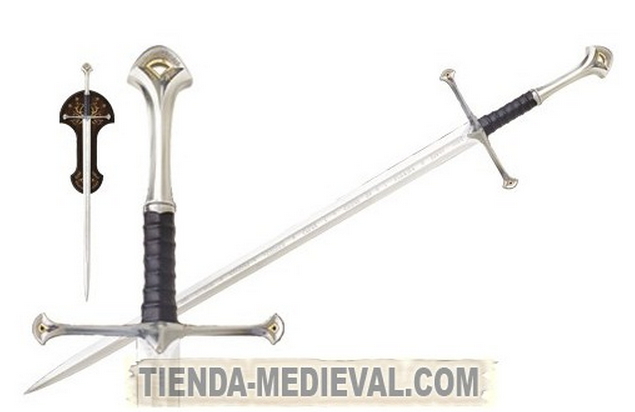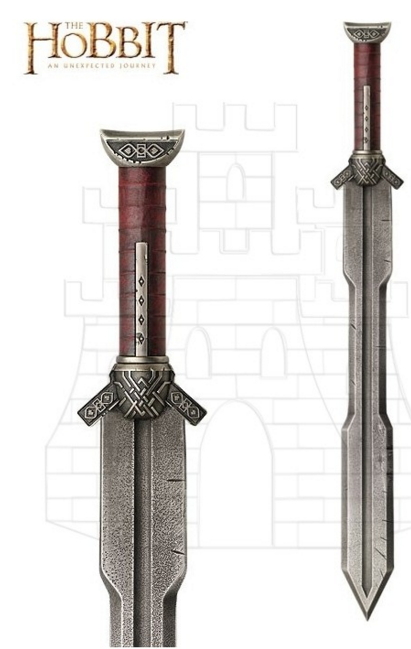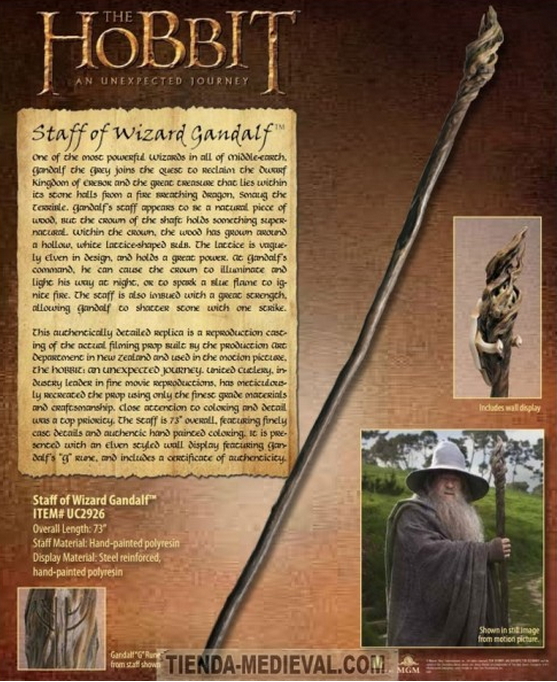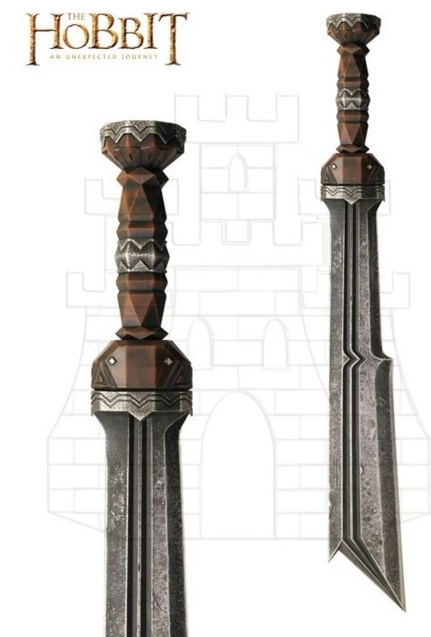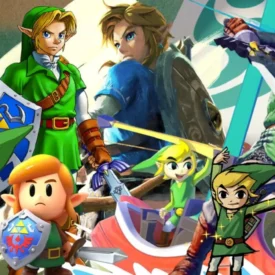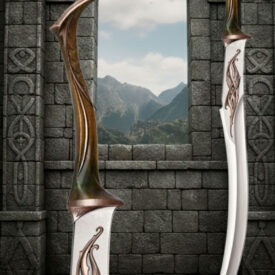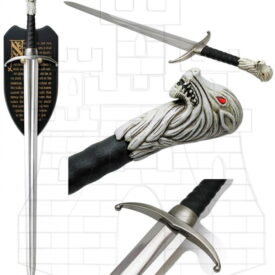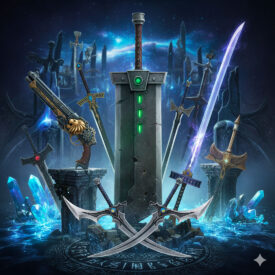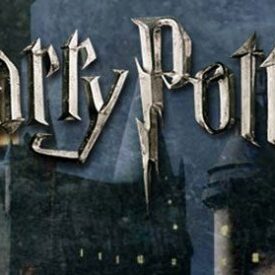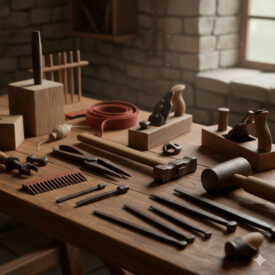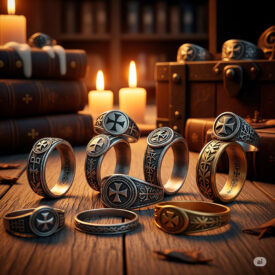Legend tells: the blades of Middle-earth are not mere tools; they are witnesses to oaths, inheritors of forgotten lineages, and dormant flames that illuminate the darkest moments of the night. In this journey, you will understand why a sword can signify kingdom, redemption, or the spark of courage in a hobbit’s heart.
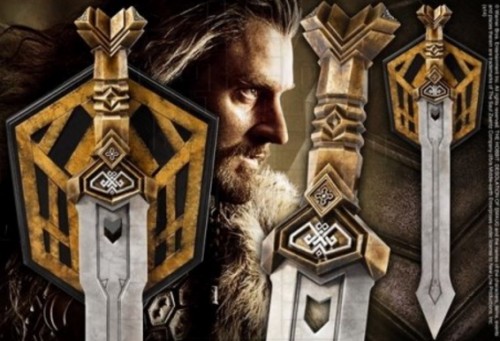
Why swords matter in Tolkien’s mythology
In J.R.R. Tolkien’s work, weapons speak. Not with words, but with history: an inscription, a fracture, a light that appears in the darkness. Blades carry memory and destiny. Here you will learn who forged these swords, what they signify, and how their history connects the First, Second, and Third Ages.
Timeline of sword forging
The chronology helps place each blade in its historical and symbolic context. Below you will see a condensed timeline that groups the essential events related to the most relevant weapons.
| Era | Event |
|---|---|
| First Age of the Sun | |
| Forging of Narsil | Telchar of Nogrod, a skillful dwarven smith, forges the sword Narsil in the Blue Mountains. |
| Forging of Orcrist, Glamdring, and Sting | These Elven swords are forged in the hidden realm of Gondolin. Glamdring is wielded by King Turgon. They are imbued with the ability to glow with a cold blue light in the presence of Orcs. |
| Duel of Melkor and Fingolfin | Melkor uses his hammer called Grond. |
| Creation of Anglachel | Eöl, the Dark Elf, forges this sword of meteoric iron, which would later be known as Gurthang. |
| Creation of Ringil | Fingolfin wields this sword to wound Morgoth seven times in their legendary duel. |
| Fall of Gondolin | Orcrist, Glamdring, and Sting survive this event, though the details of their survival and arrival in a troll cave are unknown. |
| Second Age of the Sun | |
| Diminishment of Elves and Rise of Gil-galad | Gil-galad is recognized as the last great king of the Noldor. He fights against Sauron with his spear Aeglos. |
| Narsil in Possession of Elros | The sword Narsil passes into the hands of Elros, the first king of Númenor, and is transmitted through his lineage. |
| War of the Last Alliance | Elendil, foreseeing the fall of Númenor, rescues Narsil and wields it in battles against Sauron. Narsil breaks during his combat with Sauron. His son, Isildur, uses a fragment of Narsil to cut the One Ring from Sauron’s finger. |
| Third Age of the Sun | |
| Disaster in the Gladden Fields | Isildur entrusts the broken fragments of Narsil to a soldier. The fragments eventually reach Elrond. |
| War against the Witch-king of Angmar | The Daggers of Westernesse are forged by the Dúnedain for their conflicts against the Witch-king. |
| Thorin’s Quest to the Lonely Mountain | Bilbo and Gandalf discover Orcrist, Glamdring, and Sting in a troll cave. Thorin claims Orcrist, Gandalf takes Glamdring, and Bilbo keeps Sting. Later, Bard the Bowman’s Black Arrow kills Smaug. In the Battle of the Five Armies, Orcrist is used and then buried with Thorin. |
| War of the Ring |
|
From the First Age to the Third: the journey of the great blades
Forging in Tolkien’s work has names and hands: dwarven smiths like Telchar, Elven artisans of Gondolin, and a legacy passed down through generations. When a sword changes owner, its meaning changes too.
Narsil and Andúril: fragments of destiny
Narsil was born from Telchar’s expert hand and became a symbol of the power of Númenor and its heirs. When it breaks in combat against Sauron, its essence is not lost: the fragments are kept until the time requires its rebirth. Andúril, reforged anew in Rivendell, is not just a sword; it is proof of Aragorn’s right and the promise of reunifying kingdoms.
What it represents: dynastic continuity, hope of recovery, and public declaration of authority.
Glamdring, Orcrist, and Sting: the blades of Gondolin that crossed ages
Forged in the Elven city of Gondolin, these swords possess a unique characteristic: they glow with a cold light when Orcs are near. That glow is both practical and symbolic: a warning in the night and a memory of a lost art.
Glamdring accompanies Gandalf from The Hobbit to the War of the Ring; Orcrist is Thorin’s sword, and Sting becomes small in size but immense in meaning by accompanying Bilbo and Frodo on their missions.
The symbolism of blades: beyond steel
Swords in Tolkien are metaphors for responsibility and character. When a sword receives a name or a runic inscription, that blade gains its own voice. Andúril proclaims a lineage; Sting embodies unexpected courage; the barrow-blades contain the hidden hope of a people.
Runes, inscriptions, and magical properties
Many blades bear inscriptions that reveal origin or destiny. These markings are not mere decorations: they act as reminders of oaths or as an imprint of their magical forging. The blue glow of Elven blades before Orcs or the corrupting poison of a Morgul-blade illustrate how magic and heritage are integrated into the metal.
Weapons that tell stories: technical specifications and comparison
Below is a comparative table with physical data and symbolic properties of some of the most famous swords. The idea is to facilitate understanding: blade, wielder, era, and particularity.
| Sword | Notable Bearer | Age | Properties | Dimensions / Commentary |
|---|---|---|---|---|
| Andúril (from Narsil) | Aragorn | First → Third Age | Dynastic symbol, Elven inscriptions, reinforces authority | Long blade; reconstructed in Rivendell; 103.2 cm (according to technical replicas) |
| Glamdring | Gandalf | First Age → Third Age | Elven forge, blue glow before Orcs, extraordinary resistance | Long and elegant blade; replica with silver lines |
| Orcrist | Thorin Oakenshield | First Age → Third Age | Fierce against goblins, Elven runes, buried with Thorin | Elegant blade; ornate hilt |
| Sting | Bilbo / Frodo / Sam | First Age → Third Age | Glows before Orcs, ideal for hobbits, symbol of courage | Short sword; adaptable to hobbit size |
| Morgul-blade | Nazgûl | Third Age | Magical and corrupting; leaves a corrupting fragment | Short and sharp; insidious weapon |
Lesser weapons with monumental impact
Not only great swords decide destinies. There are modest objects with colossal effects: Bard’s Black Arrow that brings down Smaug; Merry’s dagger that allows the defeat of the Witch-king; and the barrow-blades, given as a legacy to the hobbits.
The Black Arrow and the barrow-blades
The Black Arrow is humble in appearance but lethal in execution: Bard uses it to alter the course of a war. Analogously, a seemingly secondary dagger provides the opportunity for a character’s courage (and cunning) to change the outcome of a battle.
Forge, materials, and the art behind the blade
The quality of a sword in Middle-earth depends as much on the material as on the smith. Elves create light and almost immortal blades; dwarves carve robust and practical weapons; men inherit a balance between both traditions.
- Elven steel and mithril: lightness and resistance that remain unalterable over time.
- Runes and enchantments: integrated into the forging process to grant unique properties.
- Smith’s heritage: names like Telchar are not anecdotal; they represent a tradition that imprints character on the metal.
How symbology manifests in key battles
In Helm’s Deep, on the Pelennor Fields, or when Frodo makes his way to Mordor, the blades psychologically impact. A glowing sword frightens; a named sword grants legitimacy; a well-placed dagger changes the fortune of battle.
Concrete examples
- Andúril: inspires the men of Gondor and Rohan.
- Glamdring: its light and fame raise the morale of the allies.
- Morgul-blade: its poison makes the wielder fear for their life and forces healing magic to intervene.
Replicas, collecting, and the tactical experience (without recommending where to buy)
Replicas allow you to experience the tactile history of Middle-earth: the weight of a hilt, the balance of a blade, the inscription that makes you imagine summers past. Collecting is not just accumulating metal; it is preserving a narrative.
When contemplating a replica, consider its fidelity: lines, engravings, finish, and materials. A good replica respects the history and feel, and allows you to understand why certain designs survived in the narrative.
Villain blades: industrial terror and corrupt magic
The weapons of Mordor and its allies embody brutal functionality and corruption: Grond as a symbol of siege, Morgul-blades as instruments of corruption. These weapons narrate the aesthetic opposite to the Elven-human: they are tools designed to dominate and destroy without honor.
Swords and weapons of Mordor
The weapons of Orcs and Uruk-hai, for example, are crude but effective. They do not bear shining inscriptions; they carry intimidation and poison. That formal difference between an Elven blade and a sword of Mordor reinforces the moral message of the work.
Technical comparison: dimensions and characteristics (data from replicas and official descriptions)
Although Tolkien does not always specify exact measurements, official replicas and modern technical descriptions offer useful values for comparison.
| Item | Andúril | Glamdring | Sting |
|---|---|---|---|
| Blade length (approx.) | 103.2 cm | ~95-100 cm (according to replica) | ~35-45 cm (short sword / dagger) |
| Hilt | 27 cm, decorated pommel | Elven design, elegant curvature | Light, adapted to hobbit hands |
| Notable properties | Elven inscriptions, royal symbol | Blue glow before Orcs | Glows before Orcs, ideal for stealth and defense |
These figures help to understand why certain blades work better with certain wielder: a long blade demands bearing and training; a short blade can save a discreet traveler’s life.
Combat stories: scenes where the blade defines the narrative
In Moria, Glamdring faces the Balrog; on the Pelennor Fields, Andúril and Herugrim make a difference; on Weathertop, the Morgul-blade almost traps Frodo forever. Weapons not only inflict damage: they inspired actions, fears, and strategic decisions.
A key example: Merry stabs his dagger into the Witch-king and, along with Éowyn’s courage, brings about the downfall of one of the most fearsome enemies. This act demonstrates that the instrument and the wielder’s will go hand in hand.
The role of weapons in cinematic adaptations
Peter Jackson and his team visualized these blades with extreme care: every sword on screen had to tell the story Tolkien suggested. The choices of materials, the shine, the inscriptions, and the visual weight respond to a clear narrative intention.
The cinematic trilogy turned many swords into cultural icons and recreated scenes that are now a reference for any fan or scholar of the work.
Tips for better understanding a sword when examining it
Observe forging marks, inscriptions, hilt, and balance. Patina and wear tell stories. A well-preserved blade offers more than aesthetics: it provides clues about its use and age.
- Inspect the runes: they reveal provenance and, sometimes, magical function.
- Examine the hilt and pommel: the design can mark bloodline or rank.
- Visual test of balance: a well-balanced blade responds to different tactical maneuvers.
The narrative continues: why these swords still matter today
Because they unite history, craftsmanship, and heroic archetypes. A blade in Middle-earth embodies tradition, destiny, and the capacity of a single act to alter history. That is why we still study, reproduce, and tell their stories today.
Remember: every mark, every inscription, every fracture is a page of the great chronicle of Middle-earth; holding that blade, even if it is a replica, is holding a fragment of myth.
The conversation between smiths, wielders, and readers has not ended. Every new generation reinterprets these blades, studies them, and incorporates them into their own narrative. Thus, the sword ceases to be an inert object and becomes a bridge between eras.
VIEW HOBBIT AND LORD OF THE RINGS LICENSED SWORDS | VIEW MORE OFFICIAL HOBBIT PRODUCTS
